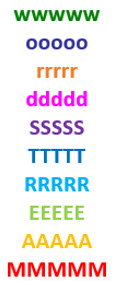Online Ad Fraud is a real problem for advertisers and it is really eating into their ad budget like a ferocious monster. Ad companies likeGoogle, through its AdSense program, have been very ruthless to websites and blogs that direct fake/poor quality traffic to ads. It has banned countless sites because of ad fraud. Google knows too well that compromised traffic quality can result into a lot of losses to advertisers and reputational damage. According to Ivespcro, advertisers are losing nearly a third of their advertising budget to online ad fraudsters. By the end of 2016, a whopping $ 7.5 billion is expected to be lost due to online ad fraud.
So what is the main cause of this problem?
According to Moz, most of those who have been selling ad space have been providing fake traffic while agencies has been getting backhanders and soft dollars from ad networks under the guise of volume discounts. In most cases, they end up serving fake/exaggerated ad impressions. Thus, many ad networks knowingly sell nonhuman traffic to clients in order to earn quick cash.

So who is getting hit?
The primary vehicle for ad fraud is usually automated software known as bots. Bots are meant to create a false impression and clicks in order to give an impression that the advertiser’s ads are being clicked by human. Bots represent up to 37% of traffic being directed to ad spaces. If you look at it, the level of criminal, fake traffic literary robbing clients of their hard-earned dollar is a mockery of the gigantic steps online advertising industry has made.
Therefore, there is an urgent need for a proactive solution to save marketers from losing more. As a result of these malpractices, many advertisers have started looking for a solution to this problem. 37% of them are ready to spend 11% more in order to get more certified traffic.
The way forward for advertisers and marketers
Unfortunately, 25% of advertisers have no way to detect nonhuman traffic. To better deal with ad fraud, advertisers should understand the kind of ad network they are dealing with. Before making ad buys, one should never forget to include a language on non-human traffic in the terms and conditions of purchase agreement. This includes advertisers inserting a clause in the agreement that they will not pay for nonhuman ad impressions
Apart from that, advertisers should do a background check on the ad networks and agencies they are about to enter into contract with. Most of these networks and ad agencies have online reviews left by their customers.
Digital & Social Articles on Business 2 Community(63)






